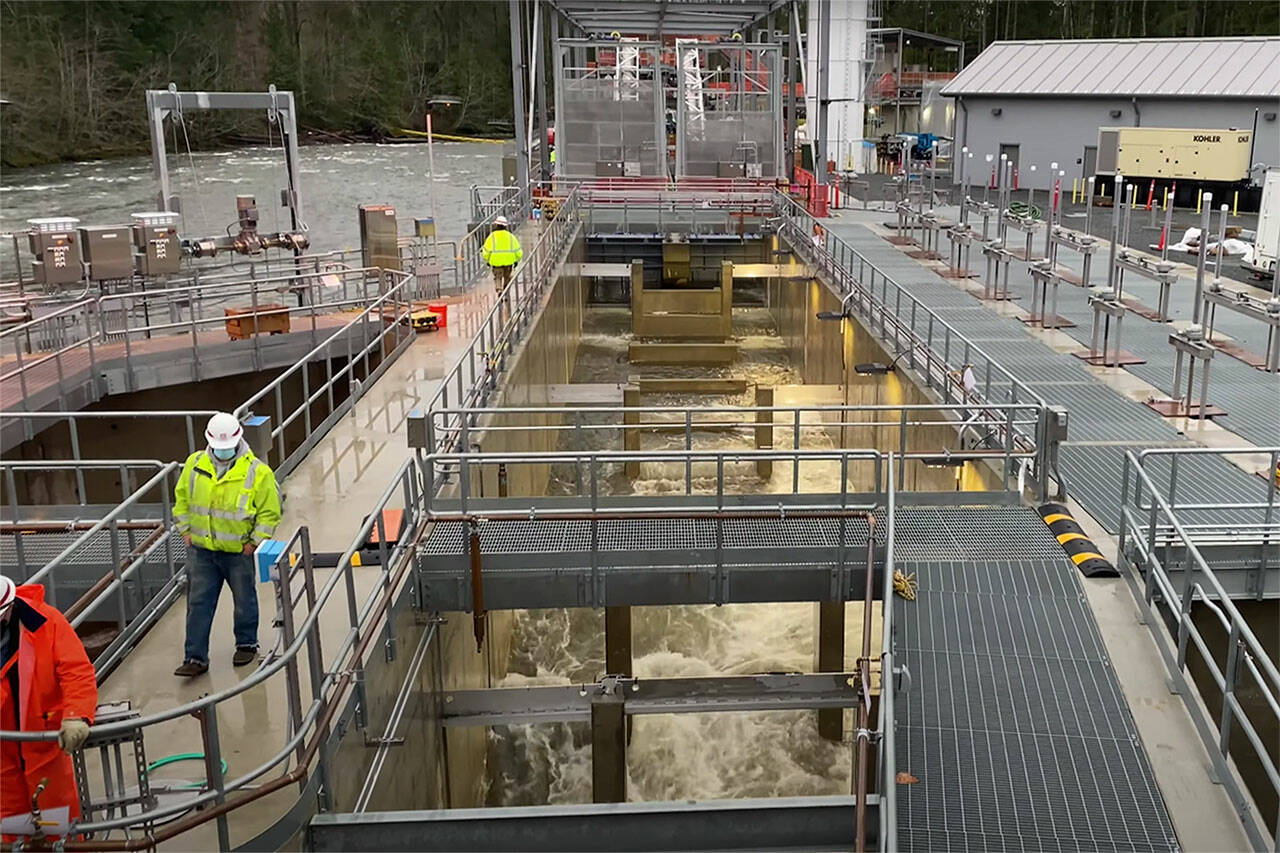Mud Mountain Dam’s shiny new fish passage facility is already needing some upgrades and repairs to the tune of nearly $11 million.
The facility, which began operations in 2021, is itself a $130 million upgrade from an older fish passage built in 1947. The old facility may have worked well more than six decades ago, but became inadequate to modern needs — a sterilized way of saying tens of thousands of fish migrating to their spawning grounds began dying at the dam every year. Russ Ladley, a Puyallup Tribe fisheries biologist, told The Columbian in 2013 that he estimated 200,000 fish would die during the height of that year’s run.
Part of the reason was because of the dilapidated dam itself, as fish would impale themselves on exposed nails or other sharp objects. But it appears the big reason was because the fish passage facility — which traps fish and literally trucks them up the dam — just couldn’t handle the increased sizes of runs. For example, more than 3 million pink salmon attempted to migrate the White River in 2009, The Columbian reported; the old facility was designed to handle only 20,000 annually, though during peak run years (every odd year) operations were expanded to that amount per day.
The new facility, touted as the largest of its kind in the nation, has a capacity of up to 60,000 fish a day, or 1.2 million a year during peak runs.
Last year, more than 481,000 fish were trapped and hauled, using a combination of both the old trap and the new. The majority of fish moved were pink salmon (454,000).
Money for upgrades and repairs to this facility — about $10.6 million — has been added to the 2023 Energy and Water appropriations bill at the request of Sen. Patty Murray, and will be voted on by Congress supposedly this year. This means, of course, that the funds may be adjusted or even omitted before the bill lands on the president’s desk.
“In the Congressionally Directed Spending process, I have the opportunity to invest federal dollars directly toward local priorities. Salmon are absolutely foundational to our economy and culture here in Washington state — especially for our Tribes — and I’m committed to doing everything I can to bolster salmon populations,” Murray said in a prepared statement. “Repairing and maintaining the Mud Mountain Dam’s fish passage facility is going to be critical as we work to save the salmon.”
What the repairs and upgrades this $10.6 million will buy is unclear – the Army Corps of Engineers Seattle District does not comment on pending legislation.


